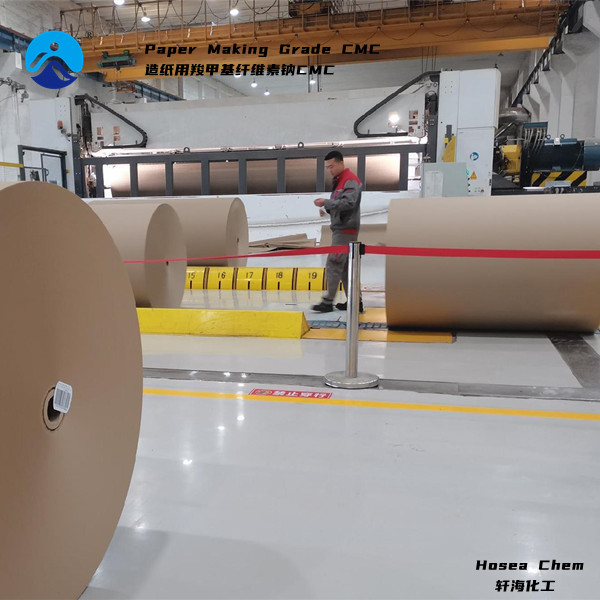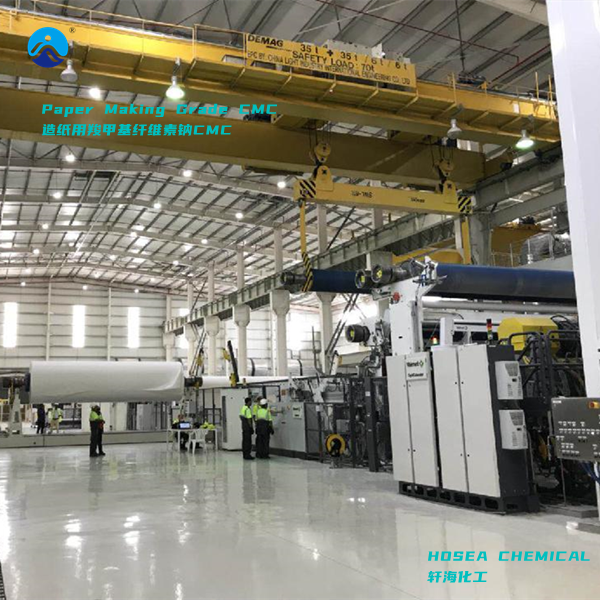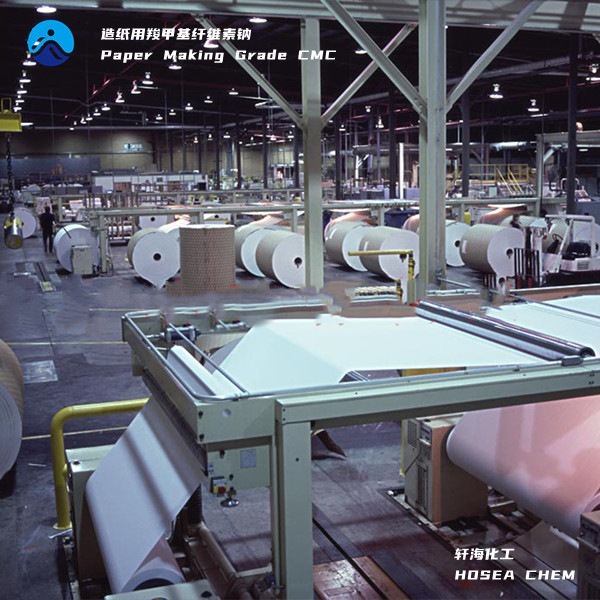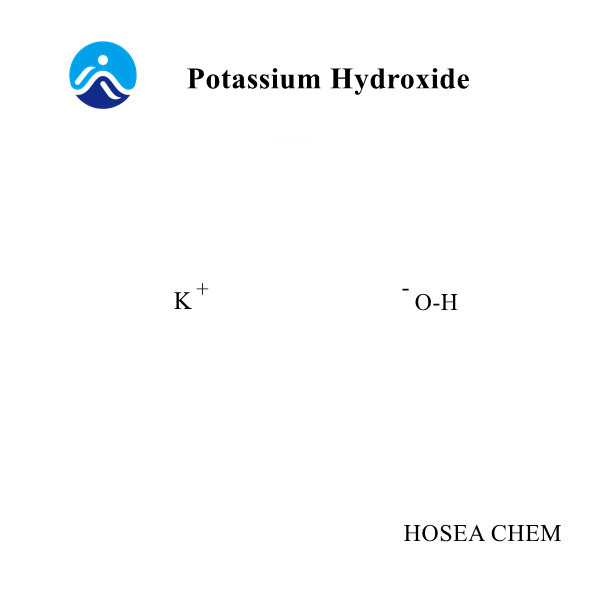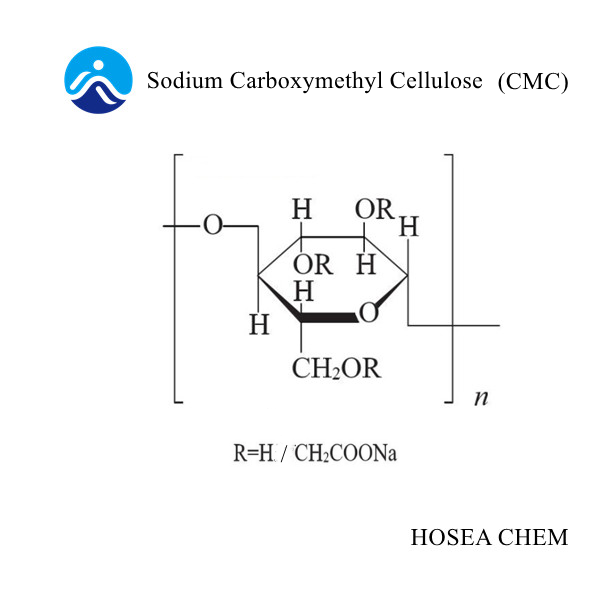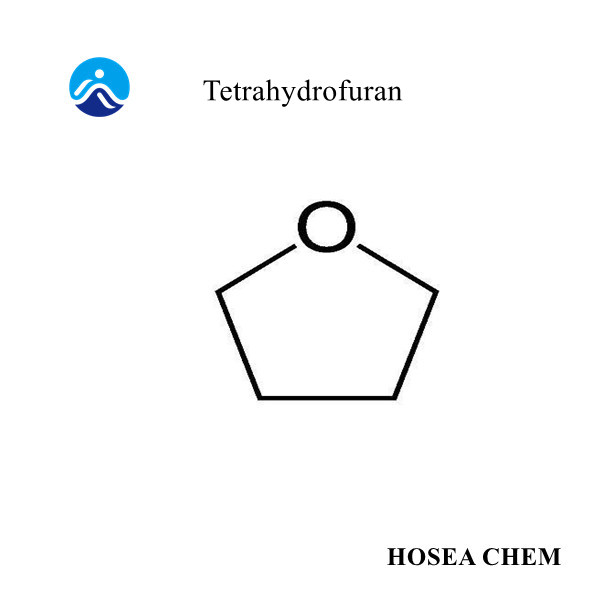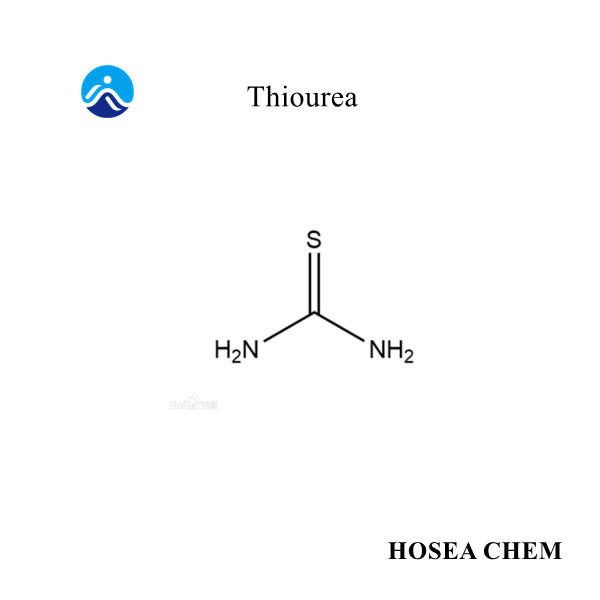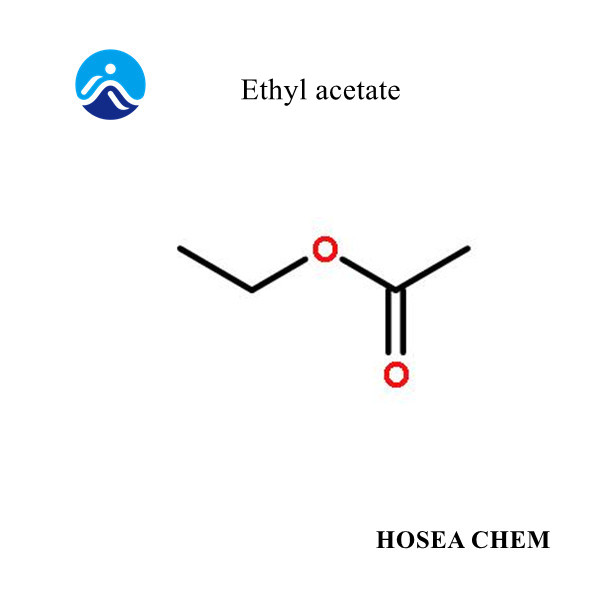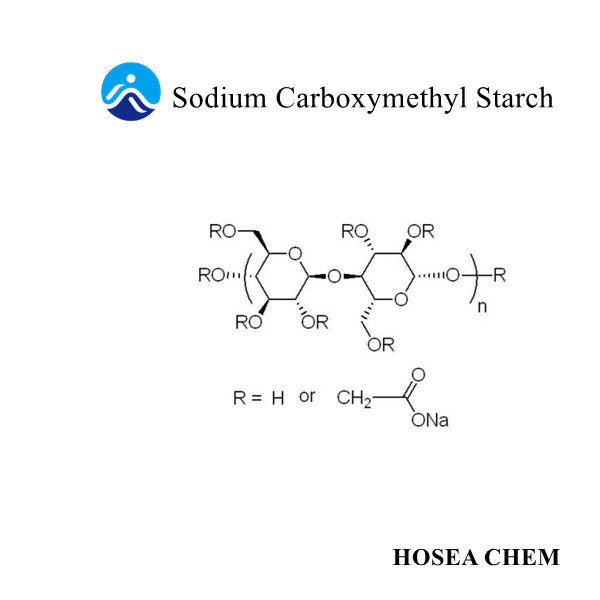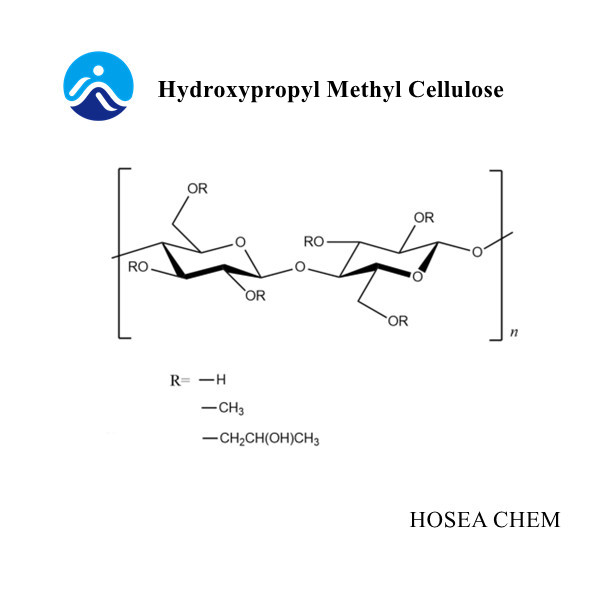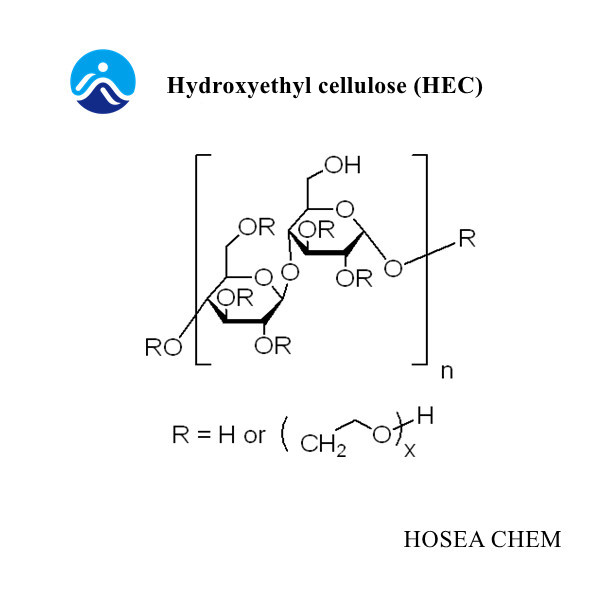Application of Carboxymethyl Cellulose as Paper Auxiliary in Paper Production
2022-04-11Hoseachem® Carboxymethyl cellulose (CMC), also known as sodium carboxymethyl cellulose, is an ether derivative of natural cellulose. It is a white or slightly yellow powder. It is a water-soluble anionic surfactant. It has a certain viscosity and can change the fluid. Its rheological properties are widely used in papermaking, oil drilling, medicine and health, daily chemicals, food, construction, textiles, optoelectronic materials and other industries, and it is safe and non-toxic, so it is known as "industrial flavor".
Carboxymethyl cellulose is generally prepared by alkalization and etherification of natural cellulose molecules and chloroacetic acid under alkaline conditions. The hydrophilic carboxymethyl group is introduced into its molecular structure, which makes the cellulose swelling With a great improvement, it is easy to be compatible with pulp fibers and filler particles, which enhances the toughness and strength of the paper. At the same time, the negative charges carried by the pulp and fillers repel each other, so that the fibers and fillers are uniformly dispersed in the pulp, and the paper uniformity is obtained. Improvement; Carboxymethyl cellulose also has good film-forming properties and rheological properties, and can be used as surface sizing agent, paper strengthening agent, paper machine wet end auxiliary and water retention agent in the paper industry.
Application of carboxymethyl cellulose in paper industry
Carboxymethyl cellulose is widely used in the field of papermaking. After being dissolved in water, it swells to form a colloid-like substance. In addition, it has good adhesion and can be closely combined with pulp fibers and fillers. Adding CMC to the surface sizing agent can improve the performance of paper. Strength and flatness, as a surfactant, can disperse the pigment well, improve the printing and dyeing effect, and at the same time can improve the water retention effect by controlling and adjusting the rheology of the coating. It is a multifunctional papermaking auxiliary.
1. Surface sizing agent
Hoseachem® Carboxymethyl cellulose has good film-forming properties and has certain film transfer properties. It can be uniformly coated on the surface of paper or cardboard with or without internal sizing. Carboxymethyl cellulose has a certain water retention effect. , so it can adjust the humidity of the paper, thereby improving the internal strain of the paper caused by drying, friction resistance, smoothness, etc. have also been improved, and at the same time, it can also overcome the problems of fluff and powder on the paper surface.
In the process of paper printing, after high temperature, there are often undesirable phenomena such as warping, curling, uneven color distribution, and poor ink absorption, which affect the appearance and quality of printing. Surface sizing can improve the surface strength of paper, which is the best way to improve the printing effect. Direct and effective method. Using carboxymethyl cellulose for surface sizing of natural printing paper can not only improve the physical strength of the finished paper, improve the grade of the paper, but also reduce the production cost. Modified starch is also a good surface sizing agent, but the film-forming property is not as good as that of carboxymethyl cellulose, and it is easy to accumulate, which affects the later printing. Using the mixture of oxidized starch and carboxymethyl cellulose as a surface sizing agent has received good results. The experimental results show that carboxymethyl cellulose is an efficient surface sizing agent. Considering its high price, the actual production A mixture of medium oxidized starch and carboxymethyl cellulose in a ratio of 2:1 is preferred. Using CMC as sizing agent, the antibacterial properties of antibacterial paper prepared by brush coating method are obviously better than that of antibacterial paper prepared with acrylic resin as sizing agent. Using it as a shoe box can improve the antibacterial properties of shoes and keep it for a long time. The study also found that CMC sizing is beneficial to the thickness and liquid absorption height of the filter rod paper, and can also improve the surface properties of the filter rod forming paper, which opens up a new way for the research of high-performance filter rod paper.
2. Paper machine wet end additives
Electrostatic adsorption is the main force retained by the wet-end chemicals. The presence of carboxyl groups on the fiber surface makes the fibers have a certain negative charge, which provides an important attachment point for the adsorption of wet-end chemicals on the fibers. It is beneficial to the regulation of the electric potential in the pulp.
After carboxymethyl cellulose enters the wet end paper, the carboxymethyl group undergoes chemical hydration with the hydroxyl groups on the fibers, which enhances the bonding force between fibers. The binding force of the paper is further enhanced, and various physical strength indicators of the paper are improved.
Carboxymethyl cellulose has a strong affinity, and it will have a synergistic effect when used in combination with a suitable cationic auxiliary, which can improve the single-pass retention rate and auxiliary effect of the paper machine.
As a wet end additive, CMC can improve the properties of paperboard. Its dosage is controlled in the range of 0.4-0.5% to form a film on the surface of the paperboard, so that the paperboard can be uniformly formed and the smoothness of the paperboard can be improved. After adding CMC, the tensile strength is increased by 20% to 30%, the surface strength is increased by 25% to 35%, and the whiteness is also improved. Polyacrylamide is a very good papermaking aid, and it has a synergistic effect with CMC in the appropriate range of addition. When CMC with a degree of substitution (DS) of 0.97 is added, and its dosage is 0.4% to 0.8% of the absolute dry pulp mass, there is a sufficient amount of CMC anions and polyacrylamide cations in the pulp to achieve a good synergistic effect, and a stable intramolecular formation is achieved. The tensile strength, burst strength, tear strength and folding strength of the paper were significantly improved.
The effect of adding carboxymethyl cellulose in the wet end of carbonless copy base paper was studied, and the experimental results found that CMC played an inhibitory role in filtering water in the wire part, so it led to the extension of the water line in the wire part. Adding CMC-treated pulp in the production of carbonless copy base paper and using it in combination with other additives can significantly improve the wire retention rate and various physical indicators of the finished paper. The comprehensive cost per ton of paper is reduced by 36 yuan. Cleaner and the paper machine runs more properly.
3. Water retention agent
Hoseachem® Carboxymethyl cellulose mainly improves the water retention value of the coating by adjusting the rheology of the coating, prevents the migration of the adhesive, improves the coating effect, and makes the surface of the paper smooth and smooth. It can also impart good optical properties, opacity and sufficient surface strength to the coating. In addition, the coating containing CMC can increase the solid content of the coating due to its good rheology, correspondingly reduce the dosage of the dispersing medium, reduce the escaped water and improve the water retention performance of the coating.
Sodium carboxymethyl cellulose can not only improve the stability of the coating, improve the surface roughening strength of the coating, but also act as an auxiliary adhesive, so that the pearlescent pigment coated paper can achieve a good printing effect. Coated paper is an important packaging paper, so it is required to have better printing properties.
Carboxymethyl cellulose has strong hydrophobic properties, is an effective water-retaining agent, acts as a lubricant on the coating blade, and gives the coating machine good running performance. Carboxymethyl cellulose not only affects the coating and coating process, but also plays a key role in the final properties of the coated paper.
By adjusting the amount of carboxymethyl cellulose in the coating formulation, its influence on the properties of coatings and coated paper was tested. The results show that with the increase of the amount of carboxymethyl cellulose within a certain range, the network structure formed by the coating is stronger, the viscosity of the coating increases, the thixotropy increases, and the water retention is better. The viscosity of carboxymethyl cellulose is a direct factor that affects the water retention effect. Adding CMC to the pulp can improve the water absorption and swelling ability of the fiber. The results showed that with the increase of CMC viscosity, the water retention value also increased. The CMC molecular chain added to the coating is adsorbed on the coating particles through hydrogen bonds, and the adsorption amount is proportional to the length of the molecular chain. The non-adsorbed active hydroxyl-containing chain links extending into the liquid phase can also be combined with the unhydrated dispersion medium (water) through hydrogen bonds to prevent free moisture from escaping and improve the water retention capacity of the coating. Treating bleached softwood pulp with carboxymethyl cellulose (CMC), more charged groups are introduced on the fiber surface, so that CMC can be adsorbed to the surface of sulfate pulp fibers under specific conditions, forming a tight fiber network and significantly improving the water retention of the pulp effect, which is associated with an increase in bond strength and tensile strength within the pulp into paper.
4. Enhancers
Hoseachem® Carboxymethyl cellulose dissolves in water to form a transparent viscous solution, which is added to the pulp to cover the fibers. During the process of forming, drying and dehydrating the paper, due to the existence of hydroxyl groups and carboxymethyl groups, the molecules are bound by hydrogen bonds. Firmly combined, more hydrogen bonds are formed between fibers through their own bridging effect, which increases the bonding force between fibers and improves the strength of the paper while enhancing the retention rate of small molecules and fillers. High-filler paper can reduce the cost of papermaking raw materials, but with the increase of the filling amount, the mechanical strength of the paper is greatly reduced, the problem of powder falling is more serious, and it also has an adverse effect on sizing. CMC is an efficient fiber reinforcing agent, which can solve the problem of strength drop caused by the high retention of fly ash extract calcium silicate filler in paper. has been greatly improved [17]. Fly ash contains different acid and alkali metal oxides, and as papermaking fillers in an aqueous solution, it is easy to cause the fly ash fibers to attract each other and flocculate into agglomerates. Therefore, a dispersant is required to disperse the fly ash fibers. The CMC structure contains a stable six-membered ring and a polar group hydroxyl group, which can form hydrogen bonds with the polar hydroxyl groups on the surface of fly ash fibers, increase the adsorption of fly ash fibers, and thus increase the availability of fly ash fibers. In terms of wettability, under the same addition amount, Hoseachem® CMC has a better effect on paper enhancement than CPAM.
Molecular deposition technology can adsorb electrolyte on the fiber surface to increase the hydrophilic group, improve the swelling, and increase the strength of the fiber itself and the bonding strength between fibers. This research is carried out, and the application effect of PAE/CMC binary reinforcement system in old corrugated pulp is analyzed. Under the conditions of PAE dosage of 0.9%, CMC dosage of 0.6%, and electrical conductivity of 1000μs/cm, the old corrugated paper has a long fracture, high resistance to The compressive strength and ring compressive strength were significantly improved. At the same time, it was also found that even if the cationic polyelectrolyte PAE was adsorbed on the surface of the fiber, the surface electrical properties did not reverse, and the anionic polyelectrolyte CMC could be adsorbed to achieve the paper strengthening effect.
Anionic polymer (carboxymethyl cellulose) and cationic polymer (modified chitosan) are bridged on the fiber surface, and the electrostatic effect generated can increase the adsorption amount of anionic polymer on the fiber surface, increase the strength of the paper sheet, and quickly dry the fiber surface. The increase in strength of the handsheet is more pronounced. The experimental results show that the high molecular weight CMC is beneficial to increase the antibacterial property and strength of the paper sheet, especially the wet strength. When the compound ratio of guanidine antibacterial agent/CMC polyelectrolyte compound is 0.5% to 1.0%, and the compound content added to the pulp is 0.1%, heating and drying for 45 minutes can make the paper sheet have a good dry/wet strength ratio ( more than 20%).
